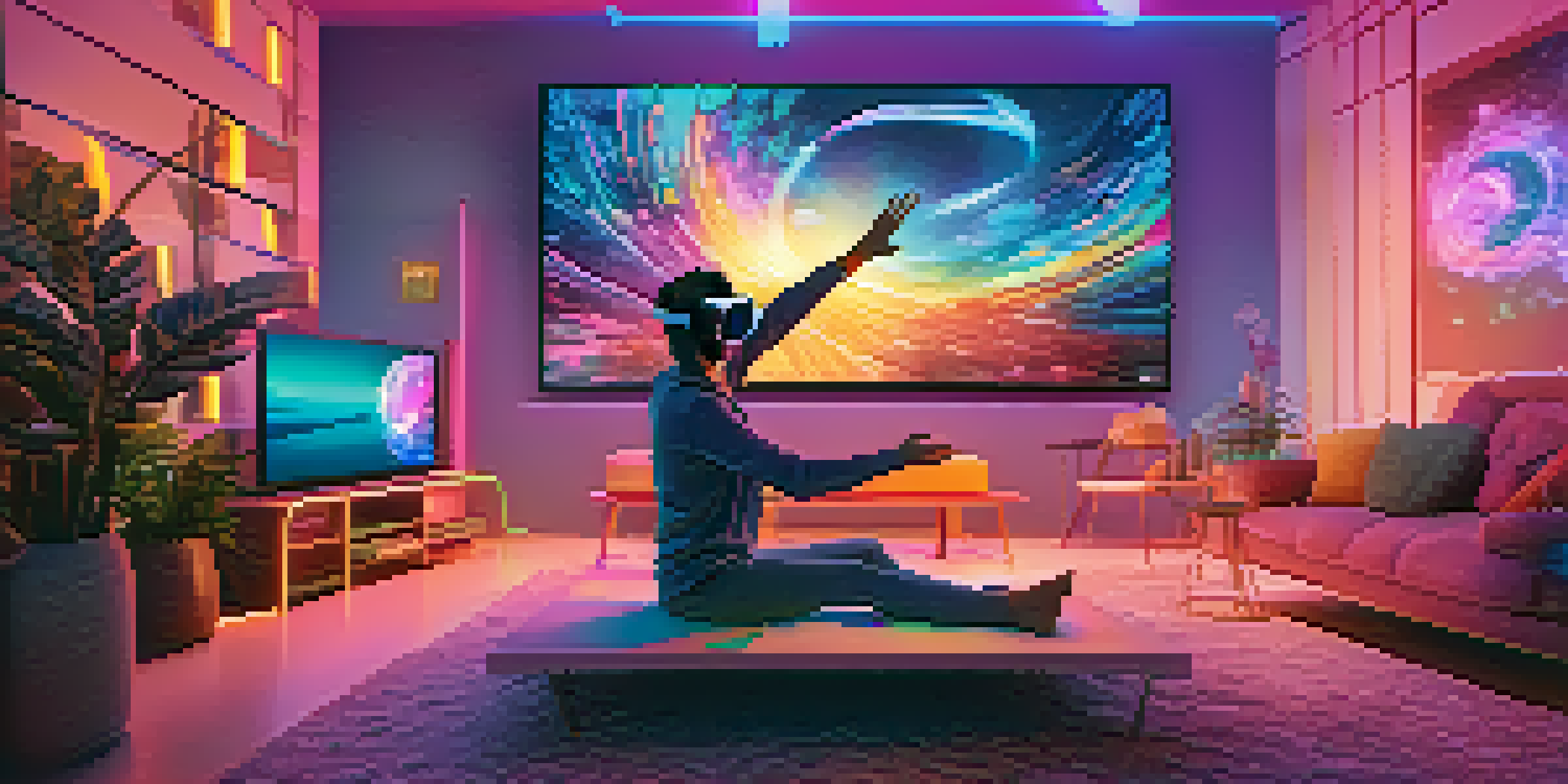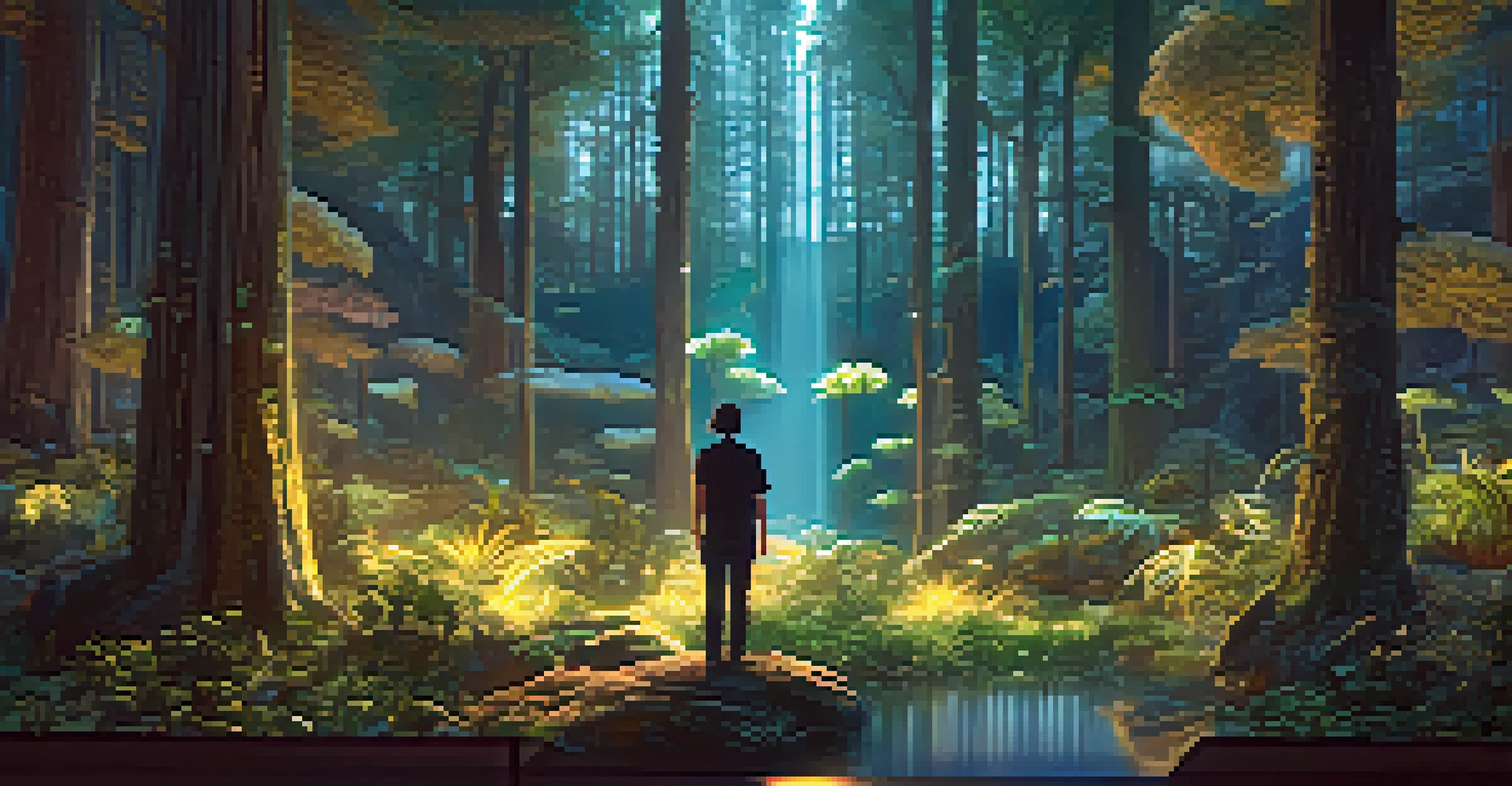The Evolution of VR: Transforming Hollywood's Narrative Style

Understanding the Basics of Virtual Reality in Film
Virtual Reality (VR) offers an immersive experience that allows viewers to step inside a story rather than just observe it. Unlike traditional films, where audiences passively watch, VR engages them on a sensory level, making them feel like active participants. This shift is not merely a technical advancement; it fundamentally changes how narratives are crafted and experienced.
Virtual reality is the ultimate empathy machine.
Imagine watching a horror movie while sitting in a dark theater. Now, picture donning a VR headset that places you right in the middle of the action, surrounded by eerie sounds and visuals. This level of immersion can evoke stronger emotional responses, reshaping how filmmakers approach storytelling. It’s an exciting time for both creators and audiences alike.
As VR technology evolves, it continues to unlock new storytelling possibilities. Filmmakers are beginning to experiment with interactive narratives, allowing viewers to make choices that influence the outcome of the story. This blurring of lines between viewer and participant is redefining the cinematic experience.
The Impact of VR on Traditional Storytelling Techniques
Traditionally, storytelling in films follows a linear format, guiding the audience through a set narrative arc. However, VR challenges this convention by offering non-linear narratives where the viewer's choices can lead them down different paths. This creates a more personalized experience that can resonate more deeply with individual viewers.

For instance, in a VR experience, you might choose to follow one character over another, leading to different story developments. This choice not only keeps the audience engaged but also encourages multiple viewings to explore various outcomes. Such techniques foster a unique connection between the story and the viewer, enhancing emotional investment.
VR Transforms Film Narratives
Virtual Reality immerses viewers in stories, allowing them to feel like active participants rather than passive observers.
Moreover, with VR’s ability to create a 360-degree environment, filmmakers can layer narratives more intricately. Subplots and character backstories can unfold in the background, allowing for a richer, multi-dimensional experience. This depth adds complexity and engagement that traditional storytelling methods often lack.
Case Studies: Successful VR Experiences in Film
Several films have successfully integrated VR into their storytelling, showcasing its potential. For example, 'The Invisible Man' utilized VR to immerse viewers in the psychological horror of the protagonist’s experience. This blend of traditional film and VR elements allowed audiences to feel the tension and fear in ways that standard viewing could not replicate.
The future of storytelling lies in the ability to immerse the audience in the narrative.
Similarly, 'Wolves in the Walls,' a VR short film, invites viewers to interact with the environment and the characters, creating a compelling narrative experience. Its innovative approach has garnered critical acclaim, proving that VR can enhance storytelling, rather than simply serving as a gimmick.
These successful examples highlight how VR can elevate the narrative by fostering deeper connections between the audience and the characters. As filmmakers continue to explore VR’s capabilities, we can expect to see even more groundbreaking stories emerge from this technology.
Challenges Faced by Filmmakers Adopting VR Technology
Despite its potential, integrating VR into filmmaking comes with its own set of challenges. For starters, the technology can be expensive, requiring significant investment in specialized equipment and software. Many filmmakers may find it daunting to transition from traditional methods to this new frontier of storytelling.
Additionally, creating compelling VR experiences demands a different skill set. Filmmakers need to think beyond the camera lens and consider how viewers will interact with the environment. This shift in perspective can be overwhelming, as it requires a deep understanding of both narrative structure and user experience.
Audience Participation Enhances Stories
With VR, viewers can influence narratives through their choices, creating a deeper emotional connection to the story.
Moreover, the audience's comfort level with VR varies widely. Some may experience motion sickness or discomfort, which can detract from the overall experience. Filmmakers must navigate these hurdles to ensure that their stories are not only engaging but also accessible to a broad audience.
The Role of Audience Participation in VR Narratives
One of the most exciting aspects of VR is the potential for audience participation. In this new storytelling paradigm, viewers are not just passive observers; they can influence the narrative through their choices. This interactive element creates a sense of agency that can lead to a more meaningful connection with the story.
For example, imagine being able to choose which character to follow in a dramatic scene, altering the emotional impact of the moment. This level of engagement invites audiences to become co-creators of the narrative, allowing them to explore different facets of the story. It adds a layer of excitement that traditional films simply cannot offer.
However, with this power comes responsibility. Filmmakers must carefully design experiences that guide participants without overwhelming them. Striking the right balance between choice and narrative coherence is crucial to ensuring that the story remains engaging, even as viewers navigate their own paths.
The Future of VR in Hollywood: Trends to Watch
As VR technology continues to evolve, we can expect to see more innovative applications in Hollywood. One trend to watch is the integration of augmented reality (AR) with VR, blurring the lines between the virtual and the real. This fusion could lead to experiences that enhance storytelling in ways we haven’t yet imagined.
Additionally, as VR becomes more accessible to mainstream audiences, we may see a rise in content specifically tailored for this medium. Filmmakers are likely to experiment with shorter formats designed for VR, catering to the audience's desire for quick, engaging experiences. This could lead to an explosion of new voices and narratives in the industry.
Challenges in VR Filmmaking
Despite its potential, filmmakers face challenges such as high costs, technical skill requirements, and audience comfort levels.
Furthermore, advancements in technology will likely make VR experiences more immersive and realistic. From haptic feedback to improved graphics, the future holds exciting possibilities for how stories are told and experienced. As Hollywood embraces these changes, the potential for VR to transform narrative styles is limitless.
Conclusion: Embracing Change in Storytelling
The evolution of VR is not just about technology; it’s about redefining how stories are told and experienced. As Hollywood embraces these changes, filmmakers are given unprecedented opportunities to connect with audiences on deeper levels. This shift fosters creativity and innovation, paving the way for new narrative forms.
While challenges remain, the potential benefits of VR in storytelling are undeniable. By allowing audiences to step inside the narrative, filmmakers can create more engaging, emotionally resonant experiences. This transformation encourages us to rethink our relationship with stories and how we engage with them.

In essence, the evolution of VR in Hollywood marks a thrilling chapter in the art of storytelling. As we look to the future, it’s clear that this technology will continue to shape the way we connect with narratives, making our experiences richer and more impactful.